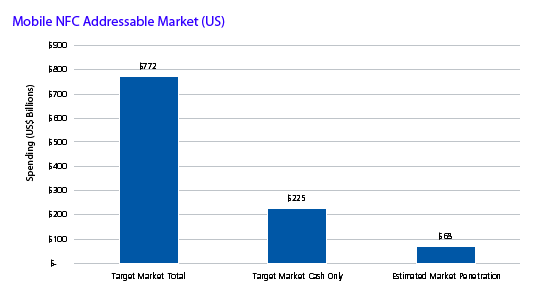The View from the Mobile NFC Finish Line
Abstract
For years, mobile near field communication has been touted as one of the most promising mobile technologies for the banking industry. In the US, mobile NFC’s target markets represent a “cash universe” of about US$225 billion. Celent estimates that a 30% cash displacement ratio, or an incremental US$151 per card account, per year is reasonable, with an average revenue increase of US$1.83 per debit card account per year.
Many banks have built their entire mobile banking strategies on the assumption that mobile near field communication (NFC) would finally lead to mobile monetization. This assumption has been shaped by the view that mobile NFC technology can embed "virtual" contactless payment cards that will be used primarily to displace cash and drive incremental interchange revenues. Unfortunately, a number of business model issues have prevented players across differing industries from achieving mobile NFC critical mass. Mobile carriers and merchants do not want to make infrastructure investments until there is proven demand; banks do not want to issue virtual cards until the infrastructure is in place. In other words, a classic chicken and egg scenario has stagnated mobile NFC rollout.
But what if mobile NFC did cross the finish line—should banks care? In a new report, The View from the Mobile NFC Finish Line, Celent draws a clearer picture of how mobile NFC will look to banks in the future. Specifically, the report concludes that, on an average account basis, banks stand to make little incremental revenue above and beyond that of plastic cards. In developed countries, this is mainly due to the fact that payment brands and banks have already done an excellent job of growing plastic card usage, and there is relatively little cash left to be realistically displaced.
This report examines key arguments both in favor of and against mobile NFC payments, as well as some key implications for banks:
- The banking industry should not subsidize mobile carriers’ NFC chip and hardware investments.
- As a result, the banking industry is in a weak position to drive mobile NFC rollout.
- The only true levers for banks’ are cash displacement ratios and over-the-air (OTA) provisioning costs. Banks should assign the cash displacement strategy to the payment brands, while tackling OTA costs on their own.
- Mobile NFC will not be for all bank customers. The opportunity from pulling mobile NFC business case levers will lie within specific, easily identifiable customer segments.

"The mobile NFC finish line does not look as promising as the industry hype would lead a banker to believe," says Red Gillen, senior analyst with Celent's banking group and author of the report. "Success will likely only come from market factors that mobile industry players are going to have to grudgingly accept: reduced prices in technology and recognition of mobile NFC payments as a niche market."

